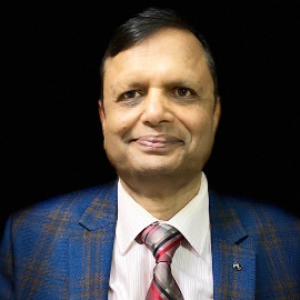Title : Treatment of Indian kala-azar(visceral leishmaniasis) - From one month to one dose
Abstract:
Visceral leishmaniasis (VL), also known as ‘kala azar,’ is the most severe form of leishmaniasis, caused by Leishmania donovani in the Indian subcontinent and transmitted by the Phlebotomous sand flies. The disease is almost always fatal if left untreated. The clinical disease of VL is characterized by progressive fever, weakness, anemia, and hepatosplenomegaly. Tests show pancytopenia and hypergammaglobulinemia with hypoalbuminemia.
Treatment of VL - Pentavalent antimonials (Sodium stibogluconate (100 mg/mL) and meglumine antimoniate (85 mg/mL), at the dose of 20 mg/kg body weight for 28–30 days, have been the standard treatment for VL in most parts of the world. However, due to extensive drug resistance to pentavalent antimonials in Bihar, where the cure rate fell to <50%. frequent cardiotoxicity which at times can culminate into occasional fatal life-threatening arrhythmias.
Miltefosine: It is the first oral antileishmanial agent, and India was the first country to register for use in India in 2002 for the treatment of VL after successful clinical trials. It was the chosen the drug for the VL elimination program in the Indian subcontinent. The dose is 50—100 mg for 28 days after meals. Adverse events include frequent vomiting and diarrhea. It has teratogenic potential and entails contraception l5-6 months in women with pregnancy potentials, due to its long half- life. The efficacy of miltefosine appears to be declining in the Indian Subcontinent.
Paromomycin: It is an aminoglycoside antibiotic approved by the Indian Government in 2006 for the treatment of VL after a successful randomised clinical trial. It is used at a dose of 15 mg/kg intramuscular injection daily for 21 days. It has a cure rate of 95% in the Indian subcontinent. The dose in other endemic regions has not been established. The main advantage of the drug is its excellent safety profile and low cost .



